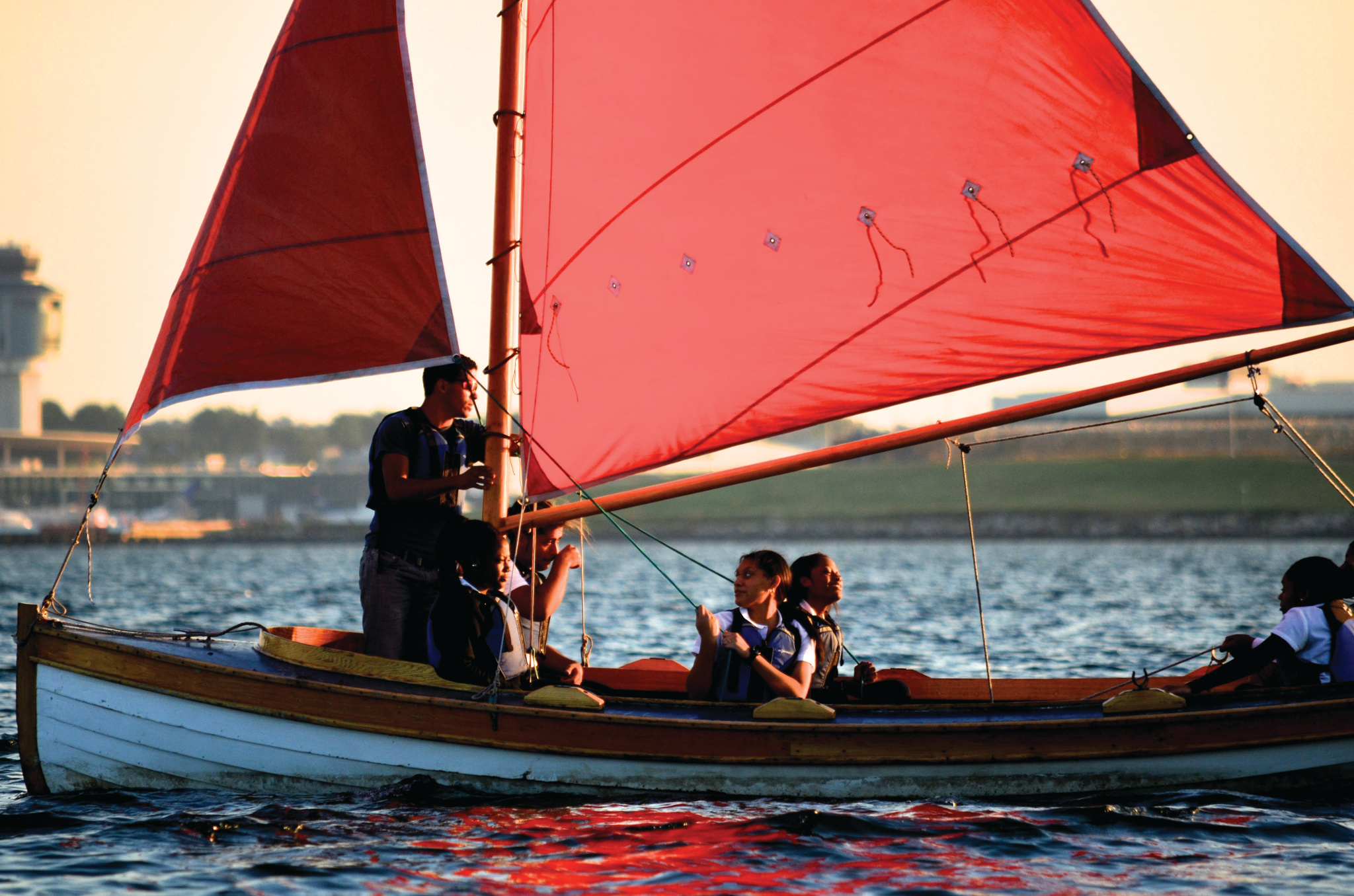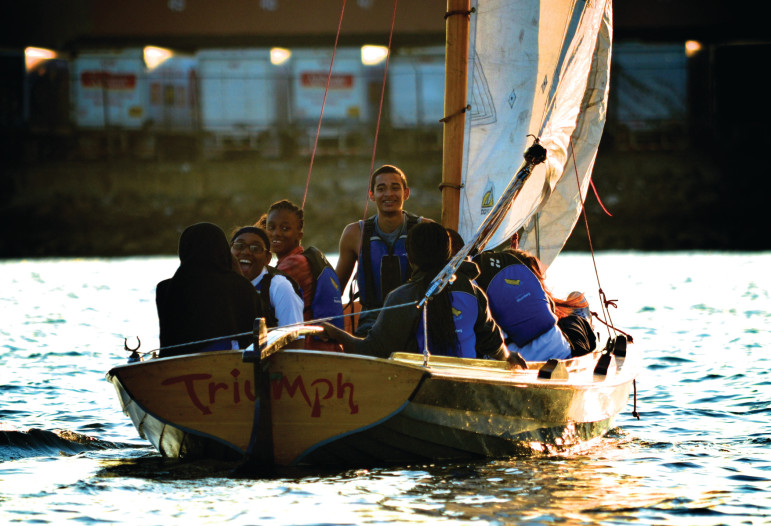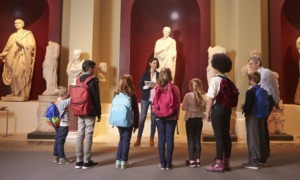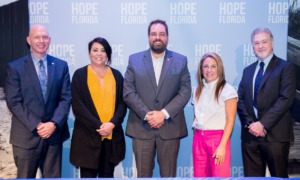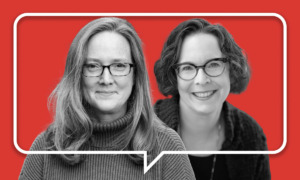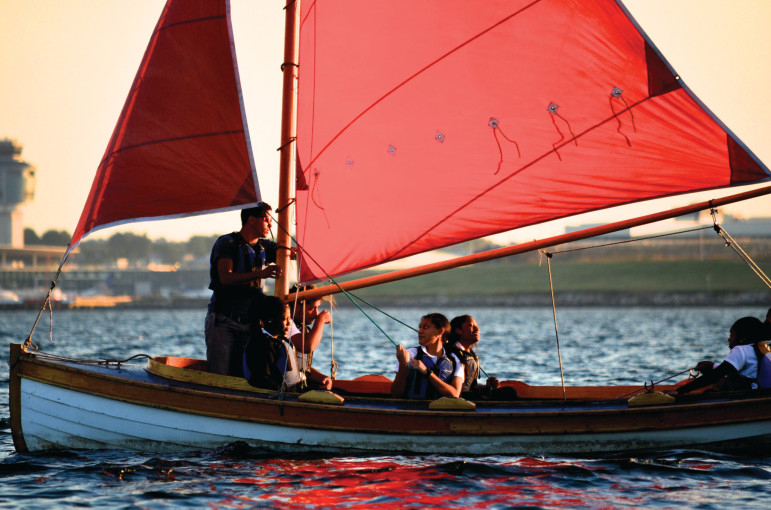
Joaquin Cotten / Rocking the Boat
Students in the On-Water program learn to sail with trained program assistants at the mouth of the Bronx River in New York in the fall of 2013.
Inside a brick building, with wooden floors splattered with paint, sawdust in the air and loud power tools, teenagers in goggles bang wooden planks with hammers and drill holes with power tools to build a pristine Whitehall rowboat.
Rocking the Boat, a free after-school program, currently serves 100 teens from the Bronx each year, building skills in woodwork, architectural design and painting so they can build wooden boats. They also get lessons on how to navigate life, said Adam Green, the organization’s founder and executive director.
Rocking the Boat, which is located on Edgewater Avenue off the Bronx River, aims to build confidence in high schoolers while providing skills they need to be competitive in the workplace, Green added.
A safe place to grow
Small and unassuming from the outside, on a deserted street lined with warehouses and auto glass shops, Rocking the Boat’s brick building serves as a safe haven for the teenagers of Hunts Point, part of one of the poorest congressional districts in the country.
Though it may seem small from the outside, the 16-year-old organization is huge in terms of impact. Its 2013 budget was almost $1.7 million, and it’s evident after entering the 6,000-square-foot space that the program is anything but small or unassuming. Funding comes from a mix of government agencies, corporations and foundations.
Not only does Green’s program teach students traditional wooden boat-building, they also learn about rowing, sailing and environmental science. Plus, a socialwork program helps students maneuver through difficulties at home or in relationships.
Green recalled early program days when three young women began opening up about being sexually abused. “That’s when I realized as powerful as building boats is, it does not translate to practical realities. Students still needed someone to hold their hand and walk them through life,” Green said. The social work program, has become essential, as students talk about subjects such as nutrition, harassment and abusive relationships.
The first social worker began at the organization in 2003. A second one was added in 2007 and a third in 2012. When students aren’t boat-building, three staff social workers help with SAT preparation, college applications and counseling. The students attend group sessions and talk about things like nutrition, healthy relationships and problem solving. Students don’t leave their social worker behind once they finish the program. Social workers continue to work with them and the skills needed to stay in college.
Rocking the Boat’s program is free. There are no prerequisites, such as knowing how to swim or having experience with machines, woodwork or boats. Potential participants fill out an online application, which asks what they’re proud of doing in their free time, if they ever made something with their hands and is there wilderness in The Bronx.
Honing transferable skills
Many of the students hear about the Rocking the Boat from friends or from an older sibling who completed the curriculum. Approximately 100 students attend the program twice per week — 50 per semester, and about 50 return as hired program assistants. Take Sherene Steer, age 21, for example. Steer, who has participated in Rocking the Boat since 2008, now works as a program assistant and convinced her sister, Talia, 16, to enroll.
“The program influences us to be what we want to be, and motivates us and provides us with resources,” said Sherene Steer, who now attends SUNY Maritime College.
Taji Riley, 21, heard about the organization from a friend in 2011. She was hesitant to join because she couldn’t swim but was reassured when her friend explained swimming wasn’t a requirement.
Riley returned as a program assistant in February 2013. These program assistants are college students who earn $7.25 per hour and become teachers to current students.
Riley said she was able to take the skills she learned in the program and apply them to her nursing studies at CUNY Bronx Community College. Riley said she joined the organization in 11th grade, when she didn’t have a strong foundation in math. While building her first rowboat named “Audacity,” Riley said she learned about length, width, height and depth. She also started learning math by measuring planks for the boats. “It really provided me with the math skills my high school just didn’t provide,” she said.
When she entered college, Riley took a remedial math course. A lot of the math was geometry, and she was able to make connections from Rocking the Boat to what she saw in her textbook.
Sekou Kroamh, a 2013 graduate of the program, said he learned many skills from Rocking the Boat, too. The 18-year-old immigrant from Guinea said he found it difficult to adjust when he came to the United States four years ago.
In Guinea, Kroamh said, he enjoyed working with his hands building houses. He found refuge at Rocking the Boat, where he could continue working with his hands. He recalls his time building a 29-foot long boat, which was made for the Mystic Seaport Museum in Connecticut.
“It took me two years,” he said. “And we have [sic] to be very patient building it because we messed up a lot.”
Kroamh said the organization helped him work with fellow students from diverse backgrounds. He came to the U.S. only speaking French, and the program helped him learn English. He even picked up Spanish from working with his peers.
“The motivation and teamwork was great. That kept us moving,” Kroamh said.
Hannah Lynch, 31, a teacher in the boatbuilding program, said the organization is a safe space for students to learn problem-solving skills, and learning how to build something with your hands helps to build confidence.
“It’s a space to do something, fail and try to fix it,” she explained. “Boat building is so different from everything we do in life. It makes you go slow, trust your eyes and hands, which today has been out of touch for most of us.”
A community connection
This spring, students have been working on building a 14-foot Whitehall rowboat to add to their fleet, as well as restoring older boats. Participants in the environmental science program started a seaweed farm at the mouth of the Bronx River and have been working on a fish assessment to see what’s swimming in their backyard.
The organization has also been getting ready for their community-rowing program, which starts in May and offers Hunts Point residents the chance to row for free on the river. Next, sailing training kicks off in July.
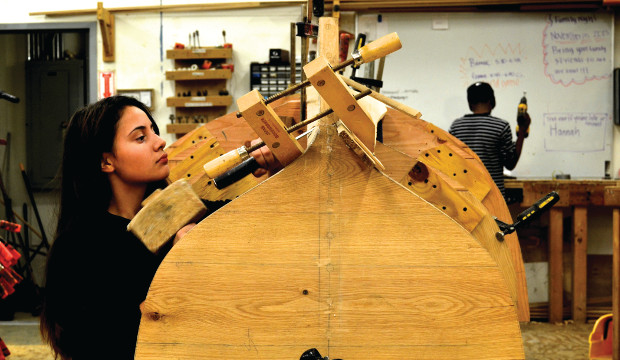
Joaquin Cotten / Rocking the Boat
Students build a whaleboat commissioned by the Mystic Seaport Museum.
Green said he sees change in the more than 600 students who have engaged with the program. More than 90 percent participants go on to college, which is significant in an area such as the South Bronx, where only about one-third of students attend college after high school, according to Rocking the Boat staff.
Green understands that wooden boat building may seem like an incongruous skill for teenagers in the South Bronx. But, he said, the lessons they learn while figuring out the ins-and-outs of the boats are essential in other parts of their lives.
And other organizations can learn from Green’s experience of teaching practical skills with a tangible goal in mind.
Green gives the example of learning chemistry: It’s not just about learning what’s on the periodic table, he said. Students can learn chemistry by going to a local river and studying its pH levels and aspects that allows the river to provide life. Another example Green gives is teaching math. Students can learn math by making a computer program or building a boat. He said it’s about solving a problem to which kids can relate.
Green also said the organization is successful at creating leadership among students. Students have the opportunity to take on greater levels of responsibility and technical skill, like the program assistants or students who have completed the program and return to teach high schoolers.
“Having that ladder is something that is extremely valuable as a way to retain kids over time,” said Green, who noted that 43 percent of participants do two or more years of Rocking the Boat. Being able to move up in the organization gives participants greater purpose to their learning. “Students are learning to move up in the world, which is something we’re all trying to do,” he reflected.
“The most fundamental skill I’ve seen in the students is the development of pride and value,” Green said. “By teaching boat building skills, these skills translate to soft skills that help in real life.”


